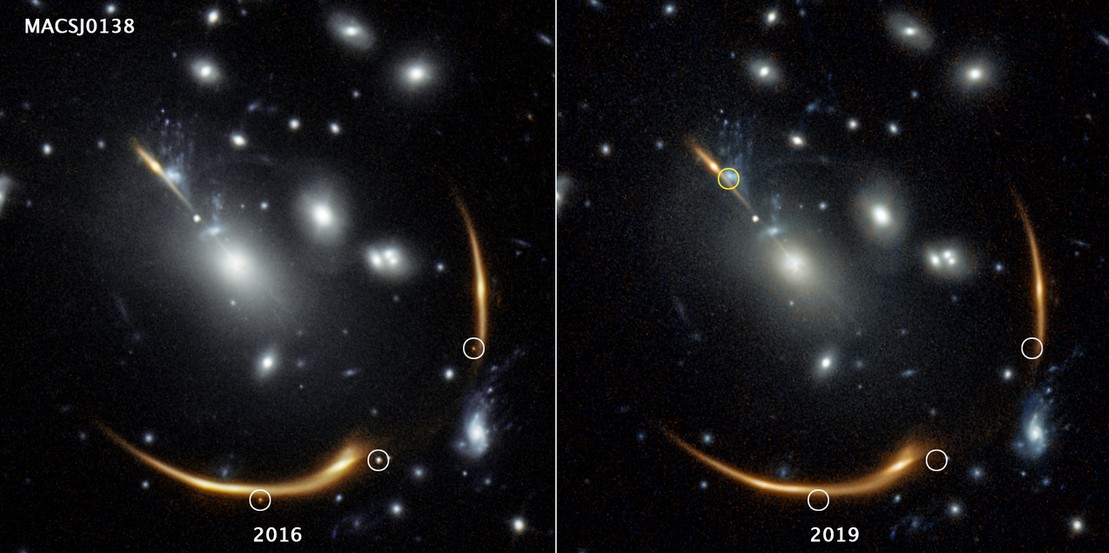The supernova in question is an event that the Hubble Space Telescope was able to observe in 2016. Three images were immortalized via a phenomenon known as gravitational lensing. According to astronomers, the James-Webb telescope would be in pole position to observe the light of this supernova again in 2037.
In astronomy, experts are able to predict certain events with precision. Examples include solar (or lunar) eclipses or the return of certain comets to the near-Earth environment. However, some predictions are much more difficult to make, especially when it comes to phenomena in the outer reaches of space. However, NASA issued a press release on September 13, 2021 regarding a rather astonishing prediction.
The United States Space Agency indeed claims that the burst of a supernova (namely the explosion of a star at the end of its life) will visible again in 2037 , that is to say in sixteen years. In addition, it will be visible through telescopes and impossible to observe with the naked eye. In their publication in the journal Nature Astronomy, researchers from the Department of Physics and Astronomy at the University of South Carolina (USA) detailed this prediction.
According to scientists, a fourth image will appear near the cluster's core in 2037. This should be brighter and larger, as the massive galaxy cluster ( MACS J0138) is in the foreground. However, this cluster will act as a gravitational lens, thus magnifying the perception of the supernova during observations by amplifying the light emitted.
"When light from a distant object passes very close to a foreground galaxy or cluster, gravitational lensing can cause it to appear as multiple images in the sky" , explain the researchers.
Furthermore, the phenomenon of gravitational lensing also explains why the light from the supernova appears to be split into several "mirror images" appearing in the white circles on the image below:

Astronomers believe the light that the Hubble telescope observed took no less than four billion years to reach us. Using near infrared, the telescope was able to distinguish the supernova and predict the sighting to come. In addition, the researchers also used computer models on how light scatters through the cluster acting as a gravitational lens. NASA compares the phenomenon to several trains departing from the same station, having the same destination and going at the same speed. However, these trains take different routes and do not arrive at their destination at the same time. This therefore explains the reason for the "delay" of the fourth image which should be visible in 2037.
Finally, the Hubble telescope, which suffered an unprecedented failure in June 2021, should be desorbed before the appearance of the fourth image. Thus, the future James-Webb telescope, whose launch should take place in December 2021, could detect the fourth image of the burst of the supernova, which moreover at other times of its explosion.